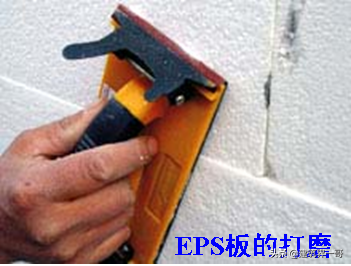EPS polystyrene board external insulation construction quality process
The base layer treatment → measuring the discharge → paste EPS polystyrene board → polystyrene board grinding → apply the facial glue→ lay the alkali-resistant glass fiber mesh cloth→ apply the facial glue→ apply water-resistant elastic putty and → surface coating or tile construction.
1. Wall base surface treatment and measurement and release line
The base surface of the wall must be cleaned, the wall flatness and verticality are checked, and the maximum deviation is ≯ 5mm. A horizontal control line is popped up on the wall, and a vertical reference steel wire is hung in the corner of the outer wall of the building; each floor is hung with a horizontal line in the appropriate position to control the vertical and flatness of the EPS polystyrene board.
2. Fixing method of EPS plate (paste method, EPS plate paste and anchor combination method, steel wire mesh frame burial method)
The common method is the combination of pasting and anchor bolts, which is to set up a number of anchor bolts on the basis of the pasting method to fix the EPS insulation board. The anchor bolt is made of high strength super tough nylon or plastic, and the tail is equipped with a screw self-tapping expansion structure. The amount of anchor bolts per square meter is about 6 below 10 floors, 8 are 10 to 18 layers, 10 are 19 to 24 layers, and 12 are above 24 floors. Tensile bearing capacity limit of a single anchor bolt ≥1. 5kN。
3. After the EPS board is pasted and fixed, it needs to be left for 24h to be sanded to prevent the EPS board from moving. Use a special trowel to smooth the unevenness of the plate edge, eliminate the height difference of the indirect seam of the plate, and apply EPS slats to fill in the plate gap when the gap between the plate seams> is 1.6mm and then smoothed.
4. Laying of grid cloth
The two-channel plaster mortar method is usually used. Use a stainless steel trowel to evenly apply a plaster mortar with an area slightly larger than a mesh cloth on the surface of the EPS board, then press the mesh cloth into the plaster mortar, and when the mortar is slightly dry enough to be touchable, immediately apply the second plaster mortar with a trowel, and bury the mesh cloth in the middle of the two plaster mortars.
5. Treatment of doors and windows openings and yang angles
The polystyrene board in the corner of the door and window hole should be cut out of the hole by the whole polystyrene board, and must not be spliced with broken (small) pieces. When laying the mesh cloth, a standard mesh cloth (200×300 mm) should be attached in the 450 direction at the four corners of the hole to prevent the corner from cracking.
File Location: Section 13 of the "Quality Control" column "Key Process Quality Control Points", click on the right side to collect the discount roll → headline column
